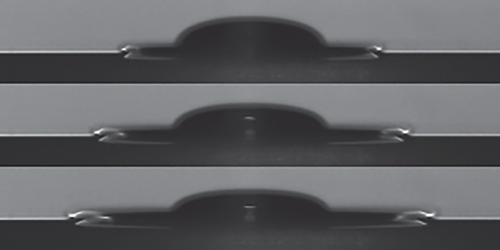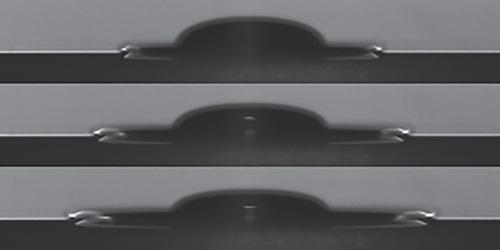Droplet Hats
Spill a drop of oil on your kitchen counter and the oil dome that initially forms flattens slowly as the drop spreads out. The oil drop and the air in the kitchen don’t mix, so, depending on the size of the drop, the rate of spreading is set by gravity or surface tension. But, Daniel Walls from Stanford University, California, and colleagues have shown that droplet spreading is physically and visually different if, instead, the drop and surrounding fluid are miscible with one another, as is the case for the natural oils present on bird feathers and crude oil from a slick. Understanding how miscible fluids spread out and mix may help to improve strategies for cleaning up birds when spills occur.
Walls and colleagues placed drops onto glass slides and submerged them in a miscible fluid. They used optical microscopy to image the drops over time. When viewed from the side, the spreading drops look like bowler hats with slowly increasing brim widths (the crown of the hat roughly retains its shape and radius but decreases in height). By mixing particles into the drops, the researchers were able to track fluid flow within the drops as they spread. Their images show a layer of faster flowing fluid that moves from the top of the drop, around the outside edge of the liquid-liquid boundary, and then down along the glass slide to create the hat’s brim. The authors suggest that this faster flowing layer arises from diffusion between the two liquids and is the dominating factor for the different droplet-shape evolution seen in their study.
This research is published in Physical Review Fluids.
–Katherine Wright
Katherine Wright is a Contributing Editor for Physics.





